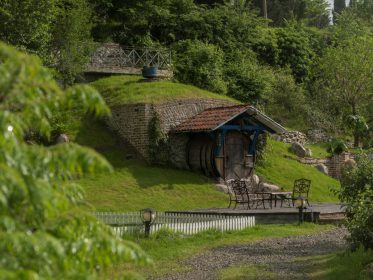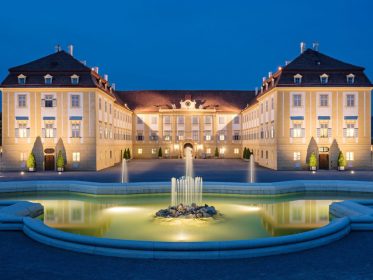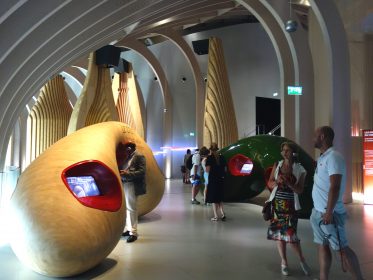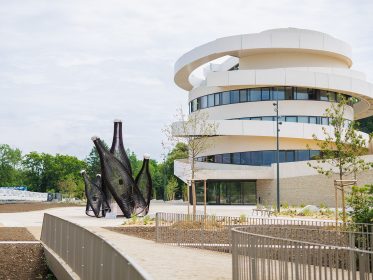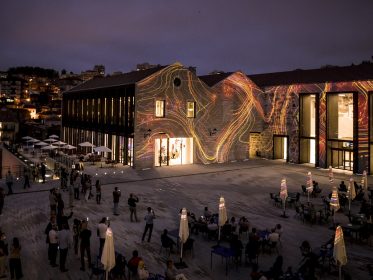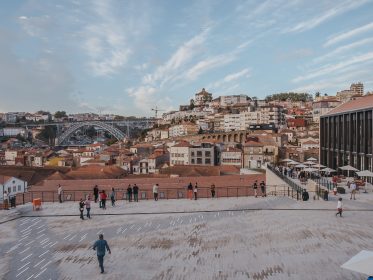The big and small Culture of Wine icons
This year, the Wine Travel Awards team’s dream came true, which we were afraid to think about when we started this project — all the leading wine museums have come together in the current release. At least the European ones. Each of them is a kind of Louvre, but, in my opinion, even better. After all, in addition to state-of-the-art expositions featuring art collections, wine museums naturally offer wine as well 😊 So, if you are planning a trip, don’t miss these locations. And if you’re as excited about them as we are, vote for your favorites by 31 March.
Vivanco Museum
So, let’s start with Spain and one of the oldest wine museums of our time (inaugurated in 2004 by H.R.M.) — Vivanco Museum. What awaits curious wine tourists here? The Museum includes 5 permanent exhibition halls, a hall for temporary exhibitions and, outside, the Garden of Bacchus, a collection of grapevines which boasts more than 220 varieties from around the world. As an outreach center, the Museum is an enterprising and ambitious initiative, which has become an international reference on wine, its history, winemaking techniques, wine research and all the cultural and artistic manifestations that revolve around it. It is a large, modern, functional space which houses the collections that the family has acquired over many years.
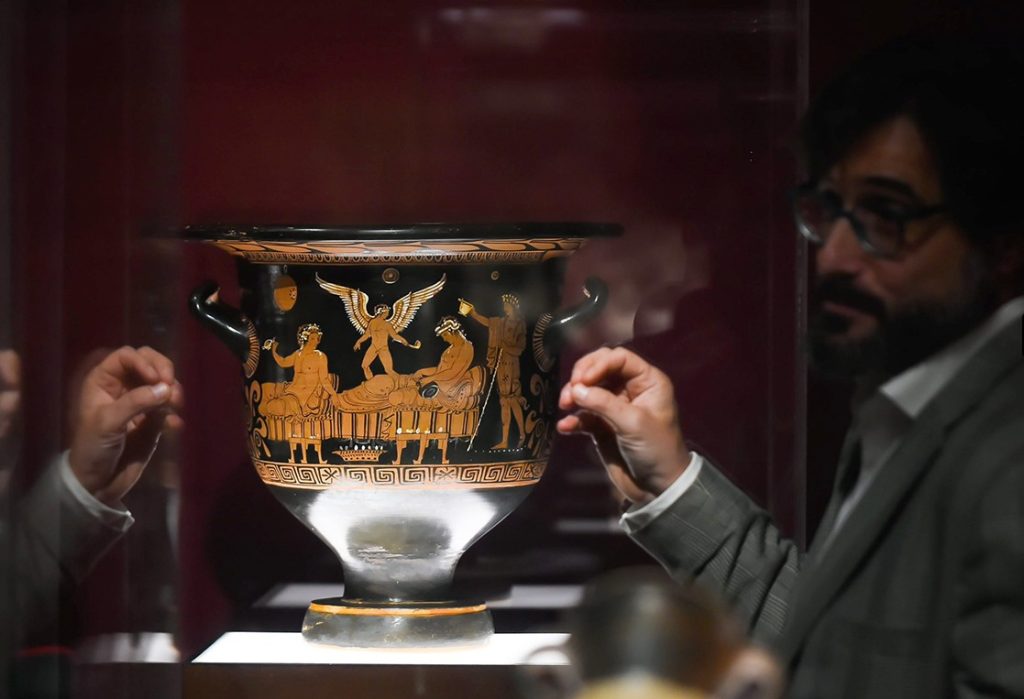
To a greater or lesser extent, they had tools for tilling the land, machinery, processing methods, historical documents… But they never took into account the fruit that gives rise to wine: the grape. That is why the Vivanco family wanted to pay this tribute to the vine and the grape. It would not be right to miss such an important detail of this story: the Vivanco family is famous around the world not only for its unique Wine Museum, but also for the wine itself, which will be produced at the family winery under the supervision of an oenologist RAFAEL VIVANCO SÁENZ.
Vivanco has been selected, for the second year in a row, as one of the 50 most amazing wine experiences in the world, and once again enters the exclusive Top 50 of World’s Best Vineyards: a list of wineries on five continents that any good wine lover and travel lover should not miss. Not only for its good wine, but also for its landscape, its architecture, its history, its gastronomic and cultural offer. However, everything that this talented family undertakes deserves the highest awards – the best vineyards, expositions, collections, wines. So, this is a place not to be missed!
World of Wine (WOW)
It is unique in the world. WOW, one of the largest tourism attractions in Portugal’s attractions. The Wine Museum will take you on an extraordinary journey from grape to bottle. In an interactive way, it presents the world of wine in a global context, then delving deeper into Portuguese wine regions. In the end, you will also go from theory to practice with the tasting of 3 styles of wine.
It will take at least 1h30 on an immersive adventure into the world of wine, as suitable for amateur connoisseurs as it is for experienced oenophiles. Adrian Bridge, founder and CEO, shared about this new wonder of the world: It is truly unique, which has made its promotion somewhat challenging, as people do not always grasp its concept immediately.
Embark on this journey through the different wine regions of Portugal and learn more about how geography, architecture, gastronomy, culture and wine are intimately related. The Pink Palace is an extravagant and eccentric experience that will immerse you in the vibrant world of rosé wine, breaking a series of myths about this style of wine, in an interactive and fun way. Includes the tasting of five completely different styles of Rosé wine. And there’s juice for the little ones! Diving into a pool of pink balls or getting into a big, charming Cadillac, Hollywood-style, everything is possible inside the Pink Palace.
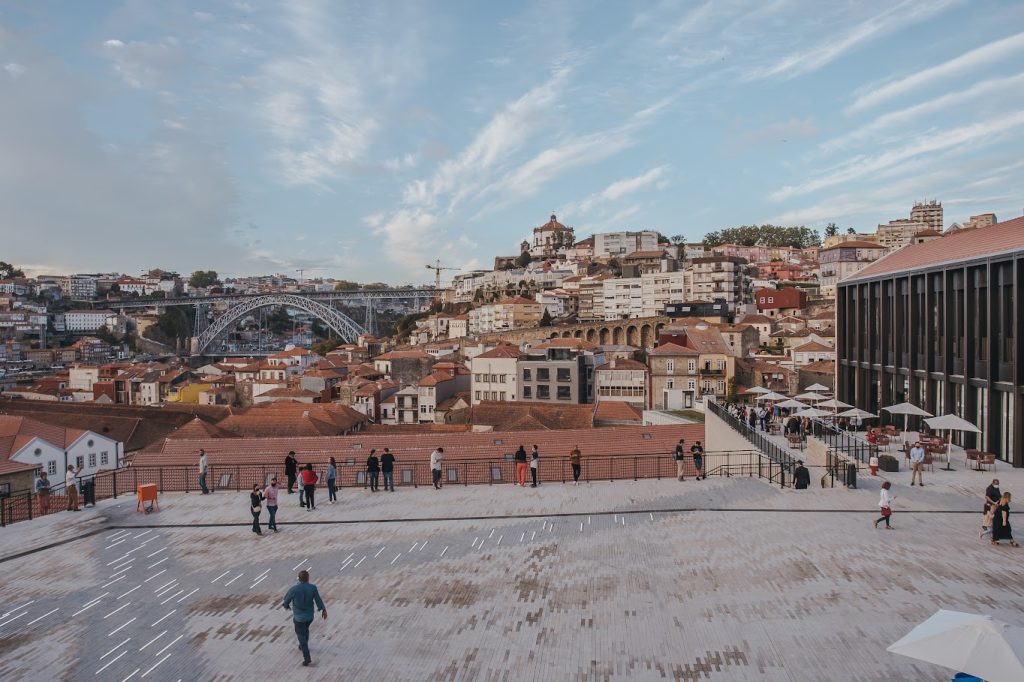
The Bridge Collection is an archaeological museum with more than 2000 artifacts used by different civilizations over 9000 years. It is a deep immersion in world history told through the ritual of drinking. The Bridge Collection – an archaeological museum that has more than 2 thousand artefacts used by different civilizations over 9 thousand years. It is a deep immersion in world history told through the ritual of drinking. Planet Cork shows how cork oaks are harvested and how the huge slabs are transformed into wine and sparkling wine corks stoppers. We thus move from the field environment to the factory environment, to then review all the applications of cork in our daily lives and this takes us on a tour of world architecture, interior design, NASA rockets and McNamara’s surfboard. The discoveries are countless, sometimes even unusual and, often, fun. In the end, there will be just one conclusion: cork is a wonderful world.
The Chocolate Story – one more interesting location, a museum that talks and shows everything about chocolate and cacao. This museum recounts the history of the Porto region and is an excellent starting point to understand the historical and cultural heritage of the city called Invicta (undefeated). The journey takes place in a time machine, from the first civilizations that inhabited this territory, its times and setbacks, the age of Discoveries, the French Invasions, the Civil War and the Siege of Porto. Everything culminates in the Industrial Revolution and later in today’s prosperity, in a fortunate Porto.
Across a cinema room, a video mapping show and a life-size replica of a tram, this museum dynamically reveals the character of a region and its people: a concentrate of vigor and energy, of affability and clearance. WOW has 6 restaurants, 5 cafes and a wine bar. These include 1828 steakhouse, where young, fruity vintage Ports can be paired with steak; Golden Catch fish and seafood restaurant; MIRA MIRA, Chef Ricardo Costa’s fine dining restaurant; T&C, the traditional Portuguese gastronomic restaurant; ROOT&WINE is where respect for raw ingredients and the artistry of Japanese techniques unite; Angel’s Share, wine and cocktail bar where you can find a wide variety of wines served in the glass.
Cité des Climats et Vins de Bourgogne
In 2010, winegrowers gave birth to the idea of a cultural and tourist site dedicated to promoting the history, heritage and wine culture of Bourgogne. In 2010, winegrowers came up with the idea of a cultural and tourist attraction dedicated to promoting the history, heritage and wine culture of Burgundy. Thus, the Burgundy Wine Board (BIVB), which represents all the winemaking and trade professions in Burgundy, created the Cité des Climats et Vins de Bourgogne Association, a network of three sites dedicated to wine tourism in three symbolic cities: Chablis, Beaune and Macon.
In the spring of 2023, Cité des Climats et des vins de Bourgogne opened its doors for the first time to introduce as many people as possible to the fabulous history of Burgundy wines. You can join the culture of the vineyards through innovative museography, a unique selection of courses and tasting workshops, creative reconstruction of the site and an exciting programme.

What to do at the Cité?
The activities you can do at the museum are divided into the following groups:
- Visits and events;
- Tasting workshops and courses;
- Events and afterwork.
One of the most interesting things to do is to visit the Cave aux Arômes, where you can improve your sense of smell in preparation for future tastings. Inside, you can find 12 sensory globes, each containing aromatic representatives from 12 different aroma families found in wine.
The Bordeaux Historia Vini association was created in November 2007 to enhance the heritage and the very special part of the Chartrons district by working on a project for a museum dedicated to wine and its trade. Combining tradition and the future, the museum aims to be a meeting place of conviviality around current wine affairs thanks to its strong links with the Bordeaux wine producers.
Musée du Vin et du Négoce de Bordeaux History
The Bordeaux Historia Vini Association was created in November 2007 to enrich the heritage and special part of the Chartres district by working on a museum project dedicated to wine and the wine trade. Combining tradition and the future, the museum aims to become a meeting point for celebrations around current wine affairs through its strong links with Bordeaux wine producers. A collection of documents, rare bottles, films and winemaking equipment brings centuries of history to life.
Passionate about my city and its wines, I wanted to tell the story of the trade that has shaped Bordeaux over the centuries and combine a legendary place with a moment of relaxation and cultural enrichment, — Gregory Pecastin, Chairman and Founder of the Museum, says.
Le Chartron, in the Porte de la Loire district, is now home to the Museum. In a building that belonged to Louis XV’s royal broker, discover three centuries of history and glory of Bordeaux’s great wines. Vaulted cellars and cooperatives recreate the daily life of 19th-century wine merchants. The museum shop occupies a former cooperage, and the permanent collection now replaces the barrels in the semi-underground cellars.
Visiting the Musée du Vin et du Négociant de Bordeaux
You can visit the Musée du Vin et du Négociant at your own pace, accompanied by a tourist brochure, to discover the permanent collection and the world of Bordeaux wines. This visit includes a complimentary tasting of two wines.
- Special visit: After your visit, enjoy a tasting and discover 3 wines selected by our team.
- Guided tour: Let one of our guides take you through the cellars and reveal the secrets of the Bordeaux vineyard and its history.
- Initiation workshop: A fun workshop to learn the basics of wine tasting. Colors, aromas, textures: practice recognising and deciphering the characteristics of wine. With a selection of Bordeaux wines and a vineyard presentation.
- Oenological workshop: Names, classifications, grape varieties, soils, tasting stages: for those who want to know everything about Bordeaux and the art of deciphering wine. Masterclass led by our professionals with wines from our selection.
A masterclass on the combination of chocolate and wine in Bordeaux: Aromas, textures, softness: the wine and chocolate unit reveals Bordeaux appellations and their individuality. With wines from our store and chocolate creations by Hasnaâ Chocolats, Grands Crus and Maison Verdier.
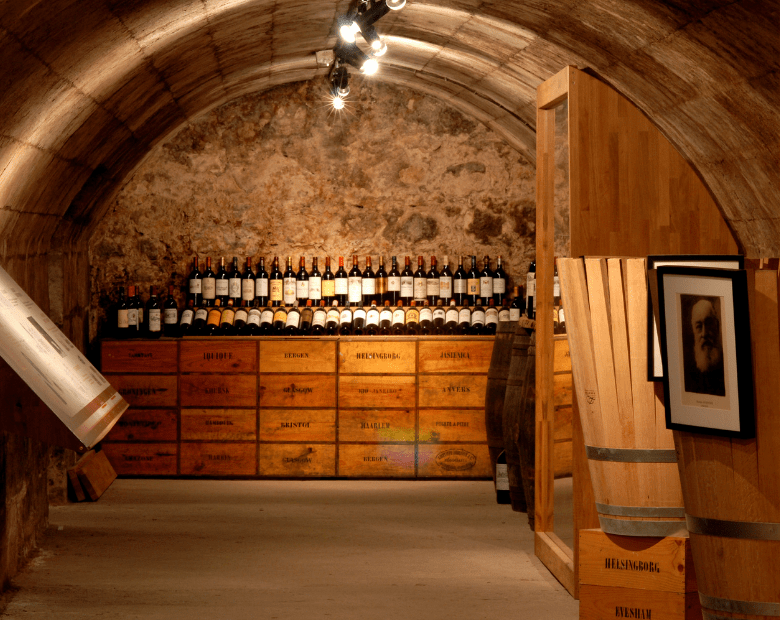
Cité du Vin
Step into the world of wine at Cité du Vin, a one-of-a-kind cultural venue located in the heart of Bordeaux. This stunning architectural masterpiece is dedicated to all things wine, from its history and culture to its production and enjoyment. At Cité du Vin, you’ll embark on a sensory journey through interactive exhibits, immersive experiences, and tastings that will delight your senses and deepen your appreciation for this beloved beverage. Whether you’re a wine connoisseur or simply curious, there’s something for everyone to enjoy.
But Cité du Vin is more than just a museum — it’s a symbol of inclusivity and sustainability. Certified Tourisme & Handicap since its opening, Sustainable Entertainment in 2022 and NF environment — places for visitors in 2021, the venue is managed and developed by the Fondation de la Culture et des Civilisations Vin, a public interest foundation dedicated to making the universal and living heritage of wine accessible to all.
So why not raise a glass to this unique cultural experience? Visit Cité du Vin and discover the fascinating world of wine like never before.
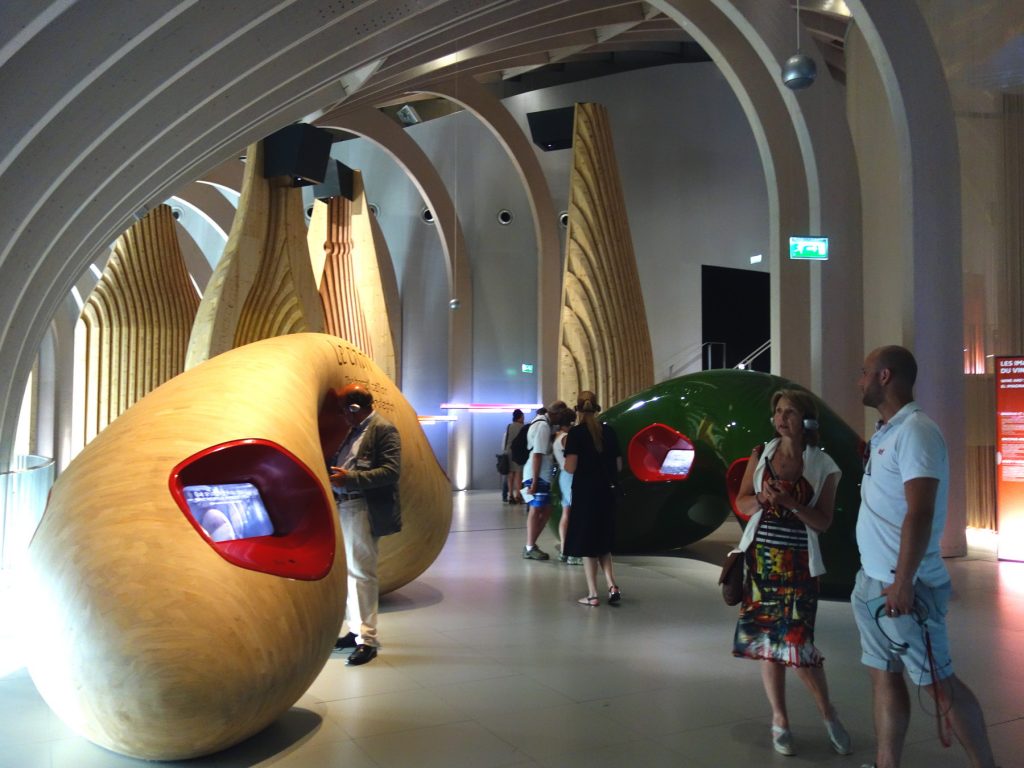
Schloss Esterházy
The largest wine museum in Austria is located in the 330-year-old cellars of a palace. This impressive exhibition includes more than 700 fascinating objects and provides an overview of the cultural history and rich viticultural tradition of Burgenland. Among the exhibits are the largest surviving wine barrel and the oldest Baumpresse (a historic type of Austrian basket wine press) in Burgenland. In the more than 300-year-old palace cellars, you can find the long history of the bacchanalian side of the Esterházy. With more than 700 rare, unusual and sometimes long-forgotten objects related to wine and viticulture — from historic barrels to the oldest Baumpresse (a type of basket press) in Burgenland – the Wine Museum convincingly presents the history of winemaking in the time of the Esterhazy princes.
Music and art, cuisine and wine meet in a unique way
Esterhazy Castle in Eisenstadt is one of the most beautiful baroque palaces in Austria and provides an impressive insight into the glamorous life of the Esterhazy princes. Thanks to the authentic atmosphere and excellent acoustics of the Haydn Hall, Esterházy Palace is still a centre for cultural events today: concerts, festivals and glamorous exhibitions are held here. The former stables opposite the castle provide a fascinating counterpoint. Together they form the Schlossquartier Eisenstadt, where the modern and the historic, music and art, food and wine meet in a unique way.
Guided tour and tasting at Weingut Esterhazy
- Tour and tasting: Classic — € 20/Person (Duration — 1 hour). Welcome sparkling wine, expert cellar tour, tasting of 5 selected wines, organic Pannonier bread.
- Tour and tasting: Exclusive — € 35/Person (Duration 2 hours). Welcome sparkling wine, expert cellar tour, wine tasting of 7 selected wines, Esterhazy cheese and venison specialities, organic Pannonier bread.
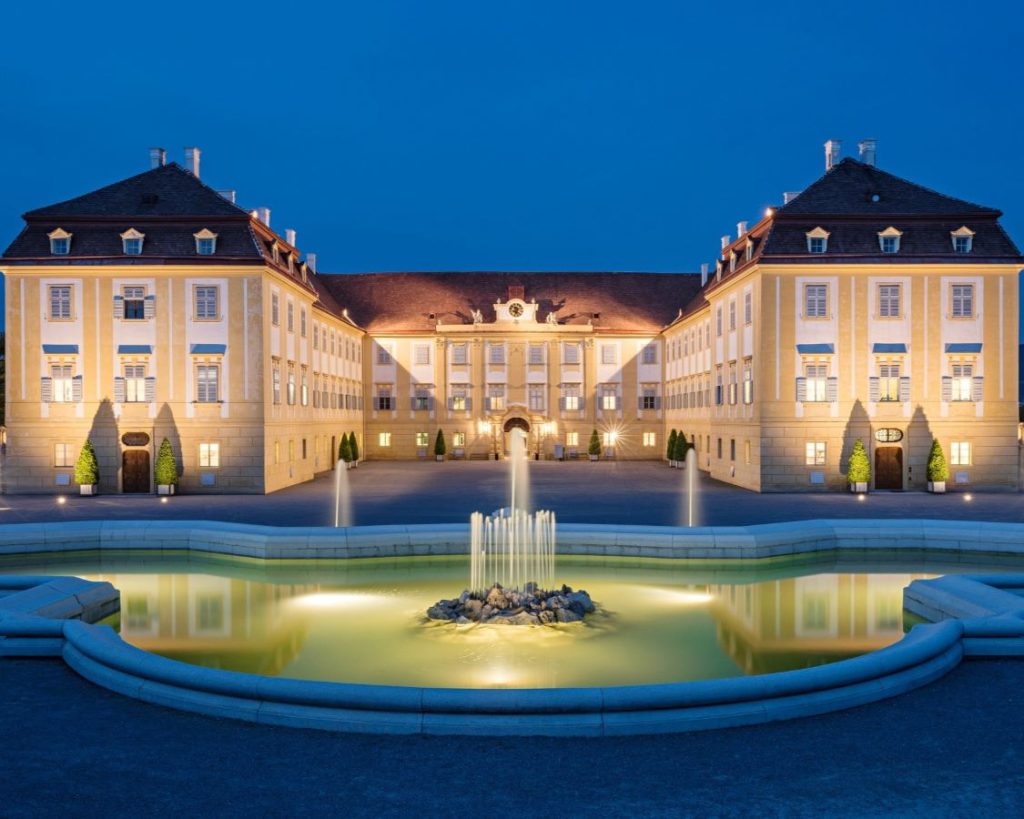
SHUMI Winery
SHUMI‘s cultural mission is to present to the world the oldest and richest cultural heritage in the world that our ancestors built over thousands of years, Georgian culture, vines and wine, to share and popularize the historical past and to introduce their own innovations.
Georgia is the oldest settlement on the European continent, as evidenced by the excavated remains of people who lived here 1.8 million years ago. Georgia is recognized as the cradle of viticulture and winemaking, which has an 8,000-year-old tradition of winemaking. This is proved by the fact that the oldest cultivated vine pips, clay wine vessels, Qvevri’s tartaric acid precipitated in fragments and cultural vine dust, Qvevri and Qvevri wine-making technologies have been found on the territory of Georgia. Many words related to viticulture and winemaking in Georgian, including wine, which was spread in the language of the peoples of Europe from the Georgian language. In 2013, UNESCO inscribed the ancient Georgian Traditional Qvevri wine-making method in the Representative list of Intangible Cultural Heritage of Humanity. In addition to the method of making wine in Qvevri, Georgia has created many values for the world. The UNESCO list of intangible and tangible monuments also includes: Georgian polyphony, which has been recognized as a masterpiece of oral and intangible heritage of mankind, Georgian alphabet, Georgian wrestling and 3 architectural monuments.
A legendary place in Georgian winemaking
The symbol of SHUMI is the Griffin (Paskunji in Georgian mythology). According to an ancient legend, it was the griffin that brought people the first bunch of grapes, which gave rise to the cultivation of vineyards on Earth. SHUMI WINE AND TOURISM COMPLEX is located in the legendary region of Georgian winemaking, in the village of Tsinandali, Kakheti, Georgia. SHUMI occupies a historical place and borders on the National Park and Museum named after A. Chavchavadze. This land belonged to the kings of Georgia and Kakheti, Prince Alexander Chavchavadze, the national poet of Georgia, and served as part of the summer residence of Russian Emperor Alexander III.
What is the Shumi tourist complex and what are its attractions?
- The First Wine Museum in Georgia, where some exhibits are more than 6,000 years old.
- The First Private Ampelographic Collection in Georgia, which today is considered the largest private collection in the world with more than 2000 grape varieties from 47 countries. It serves as a basis for scientific research, is included in the list of the FAO and has its own unique code. At this unique facility, Georgian, French, Italian and Japanese scientists conduct research, experimental work, seminars for students and employees of various educational institutions. SHUMI specialists are constantly researching and identifying the potential of rare varieties of vines, some of them have begun to be cultivated for wine production.
- The GENESIS Sculpture – the prototype of the statue of a 300-year-old vine – one of the oldest wine vines in the world grows in a private estate in the village of Tsinandali. In 2016, conditions were favorable for a harvest of GENESIS grapes, and SHUMI’s master winemakers produced dry red wine. The quantity of wine was extremely limited – only 67 bottles. To create this exceptionally rare wine, the winemakers used the traditional Georgian method, fermenting the GENESIS grapes in a Qvevri – an earthenware vessel buried in the ground. Then the wine was aged in a 250-year-old oak barrel. GENESIS wine is considered a completely new word in the world of wine!
- The VINOBIZA Pavilion: Ancient Georgia had its own calendar, in which the month when Georgians picked grapes and made wine was called vinobiza, which corresponds to the period: September – October. SHUMI patented the eponymous brand and developed a unique collection of wines VINOBIZA. The walls of the pavilion are decorated with frescoes. These frescoes are painted with Saperavi wine and reflect history and culture of Georgia, depict the famous story of the visit of the first official tourists to Georgia – the expedition of the Argonauts, about 33 centuries ago.
- The Georgian Ethnographic Pavilion, where guests can learn about Georgian eno-gastronomic traditions, attend various interesting and fun master classes and other events, participate in the traditional Georgian Supra with toastmaster and polyphonic songs performed by the SHUMI ensemble, take part in various rituals, such as the Qvevri Opening and the Lazarus Ritual.
- The Marani, where SHUMI’s wines are made in Qvevri and aged in oak barrels.
- The Enoteca, a cellar vault holding SHUMI’s best.
- ZIGU House. ZIGU is an exclusive drink that has no analogues in the world, created by the patented SHUMI technology and produced from more than 300 rare grape varieties grown in the vineyard of the SHUMI Ampelographic Collection.
- Gestalt House (Therapy) – a place to restore mental and physical harmony and find balance.
- Gastronomic zones, with a restaurant and terraces, cafes, verandas, pavilions and tasting areas with various activities including: harvesting grapes, pressing grapes in an ancient winepress and making chacha; culinary master-classes, baking Shoti (traditional Georgian bread) in a tone (traditional Georgian oven), cooking Georgia’s national foods, such as, churchkhela, khachapuri, Mtsvadi – Georgian barbeque, khinkali, and more, classes in Qvevry wine making and participating in Qvevry opening ceremonies. Lunch and dinner are available at the SHUMI Winery and Tourist Complex or at one of SHUMI’s biodynamic vineyards in the foothills of the dramatic Caucuses mountains and Picnic in Walnut Grove surrounded by wild nature. The menu reflets a wide range of Georgian dishes prepared from local high-quality ingredients and SHUMI-grown organic products. Some of the patented cooking methods and recipes are unique and do not exist anywhere else in the world.
- The Wine Shop, showcasing a wide assortment of different products and alcoholic drinks including SHUMI’s exclusives produced using our own unique technologies, among them exclusive beverages that have no analogues in the world. SHUMI’s products are acclaimed for their quality, they have earned more than 600 prestigious international awards, among them the prizes and medals that no other company in the history of Georgia has ever received.
- The Decorative Garden, with sculptures made by famous Georgian and international artists.
On the territory of the Winery and Tourist Complex, excursions and tours are offered in three languages (English, Georgian and Russian), and professional guides acquaint visitors with the history of Georgian winemaking, including the unique technology of the traditional Qvevri method and the art of making SHUMI wines.
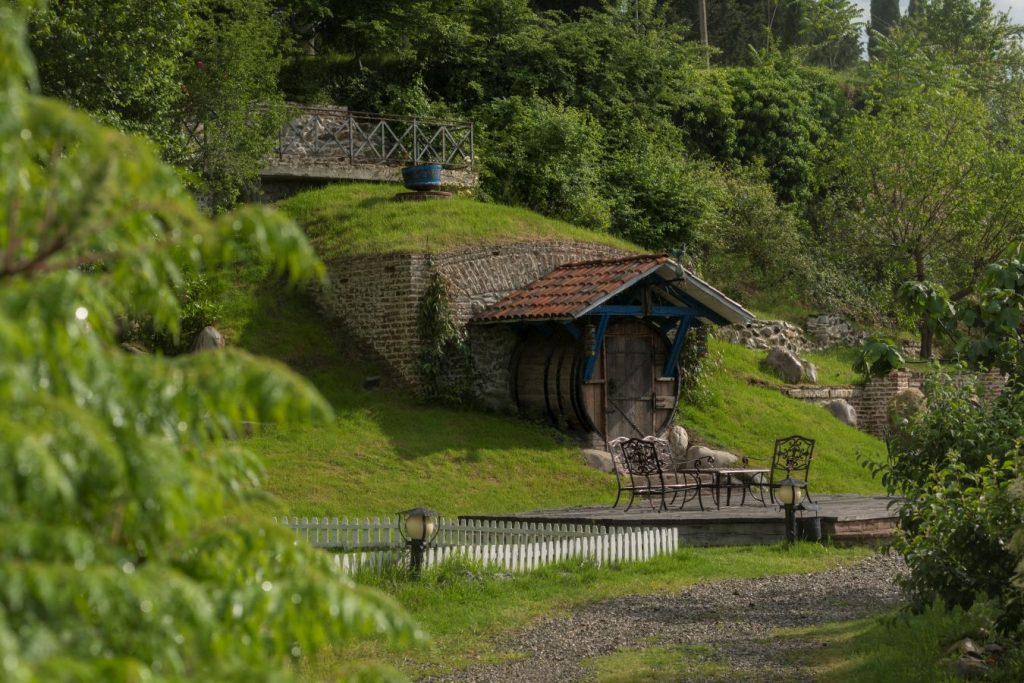
From the grand chateaux of Bordeaux to the humble vineyards of small-scale producers, the culture of wine is rich and diverse, shaped by centuries of tradition and innovation. The great and small icons of this culture are a testament to the enduring power of wine to bring people together, inspire creativity, and celebrate the good things in life.
Whether you’re a seasoned wine connoisseur or simply curious about this fascinating world, there’s always more to discover and explore. So raise a glass to the great and small icons of the culture of wine, and join us on this journey of discovery and appreciation. Santé!
